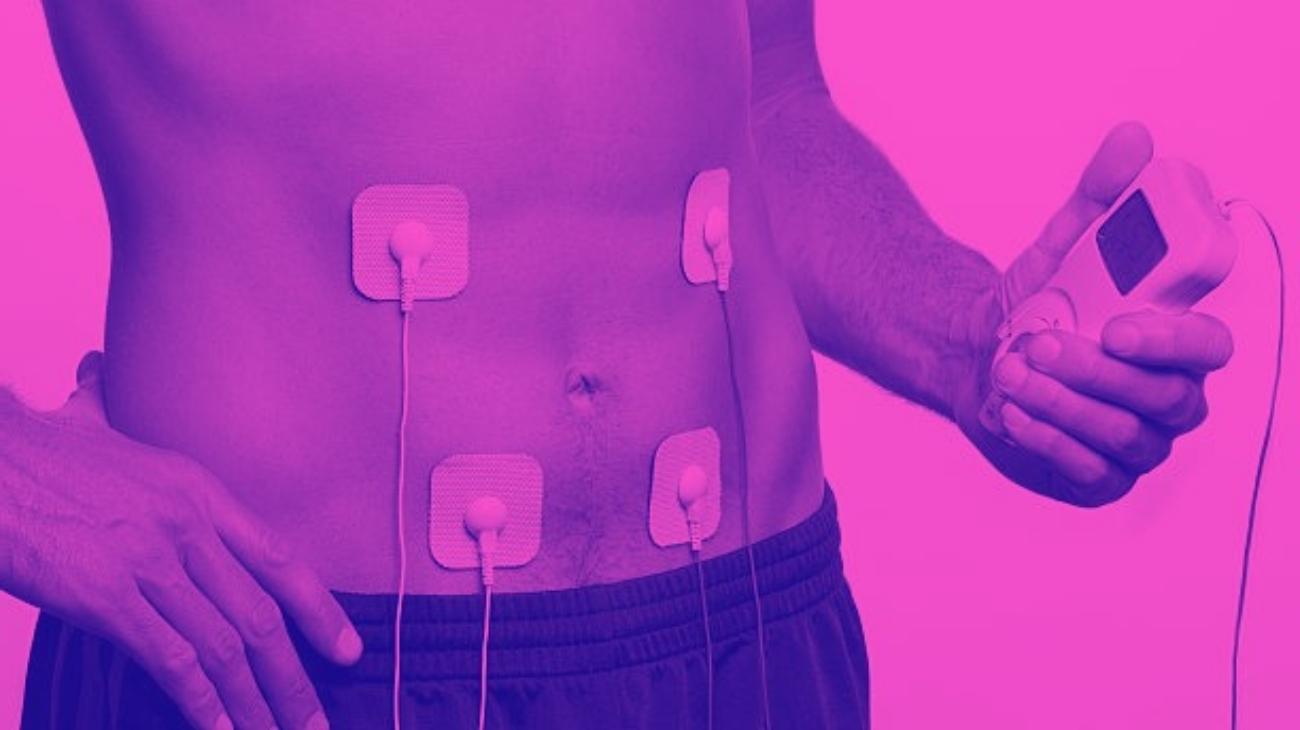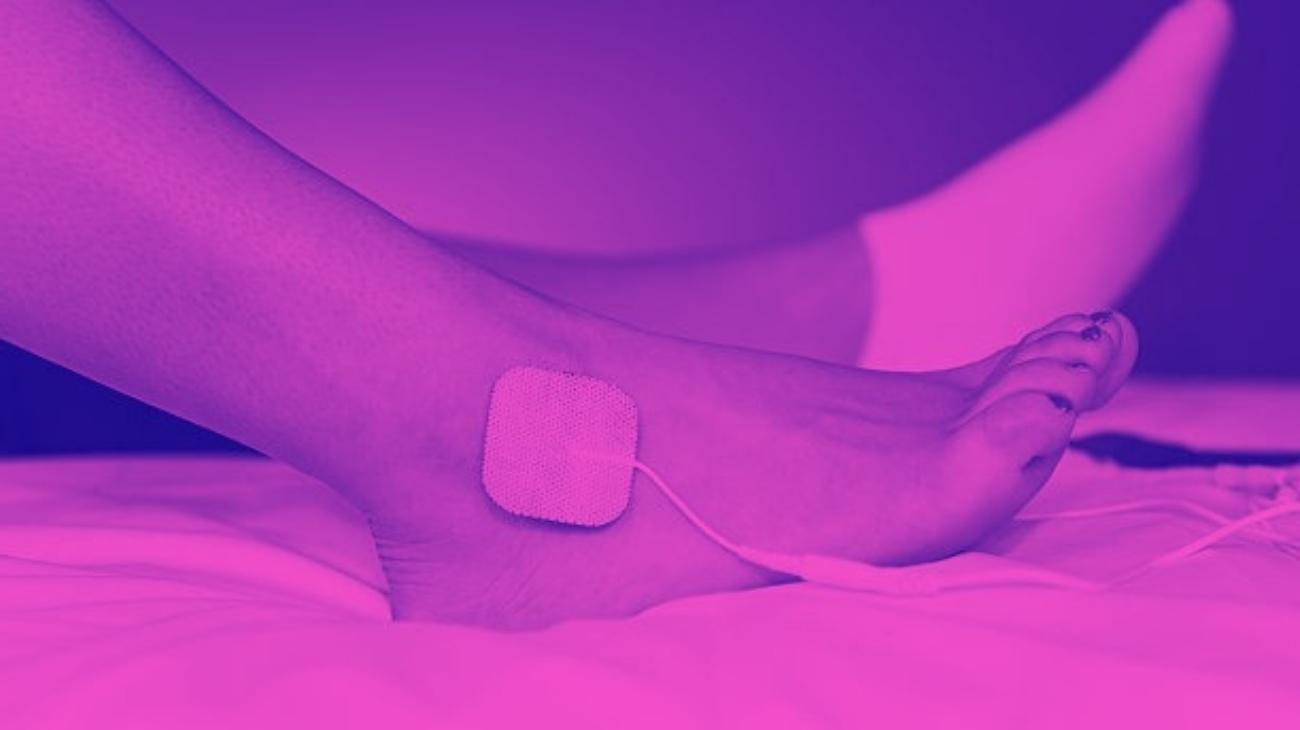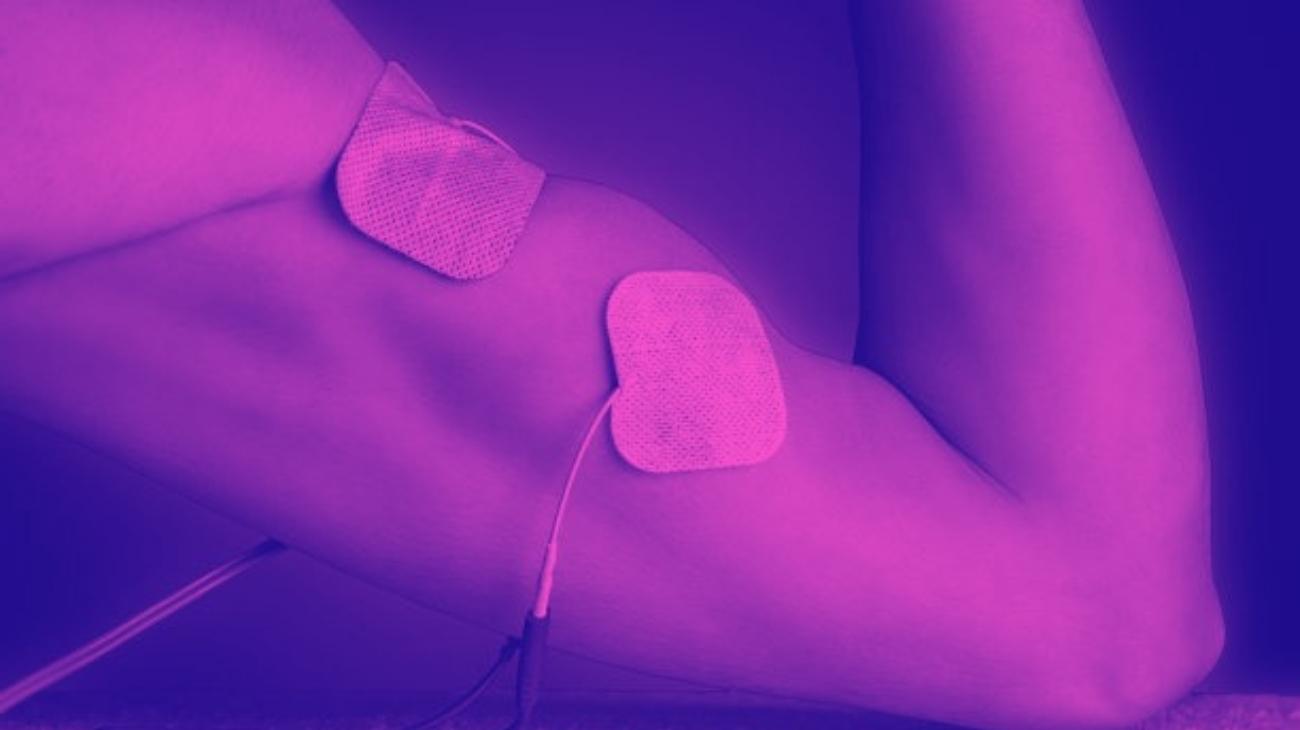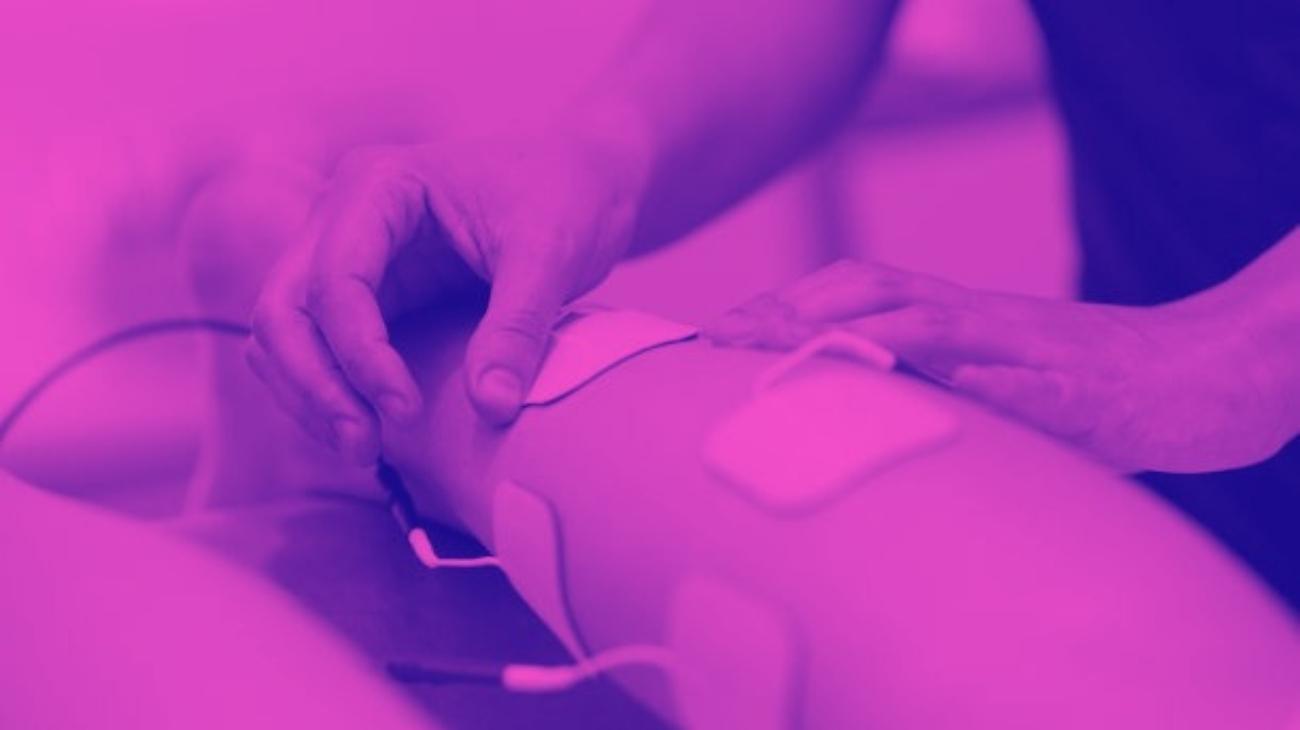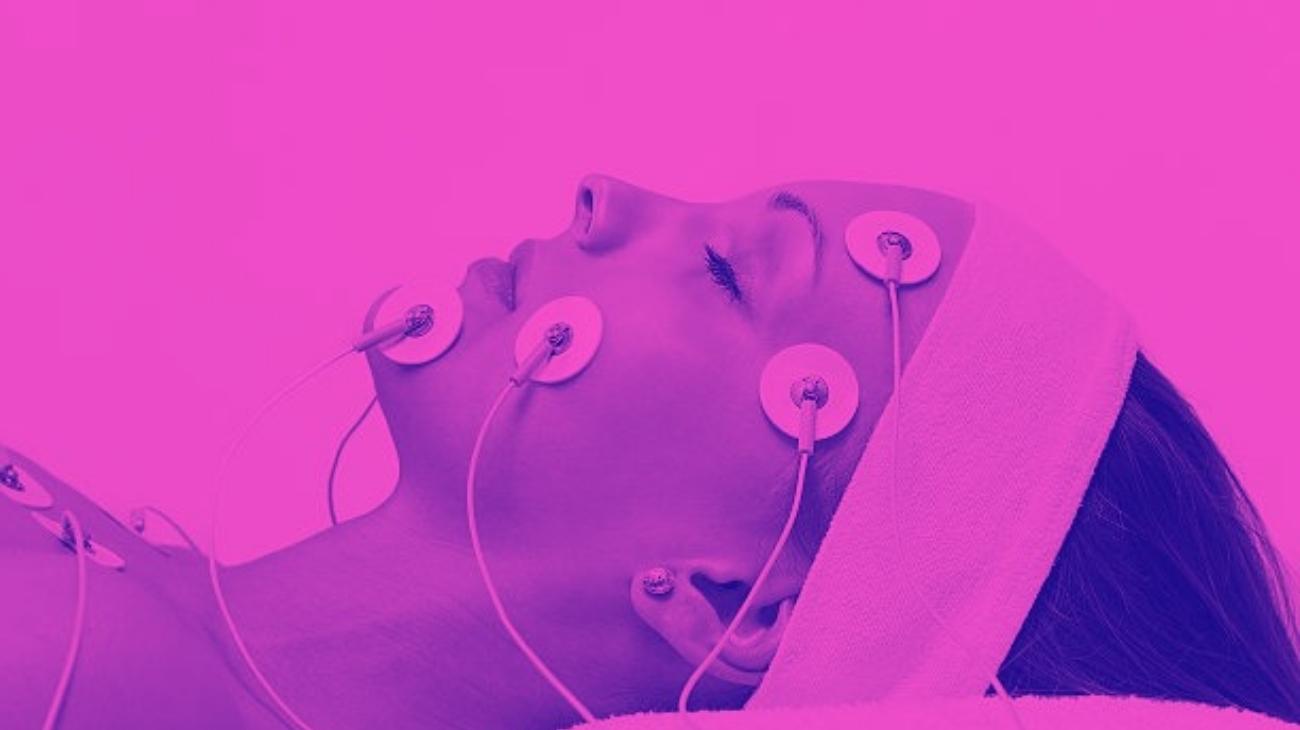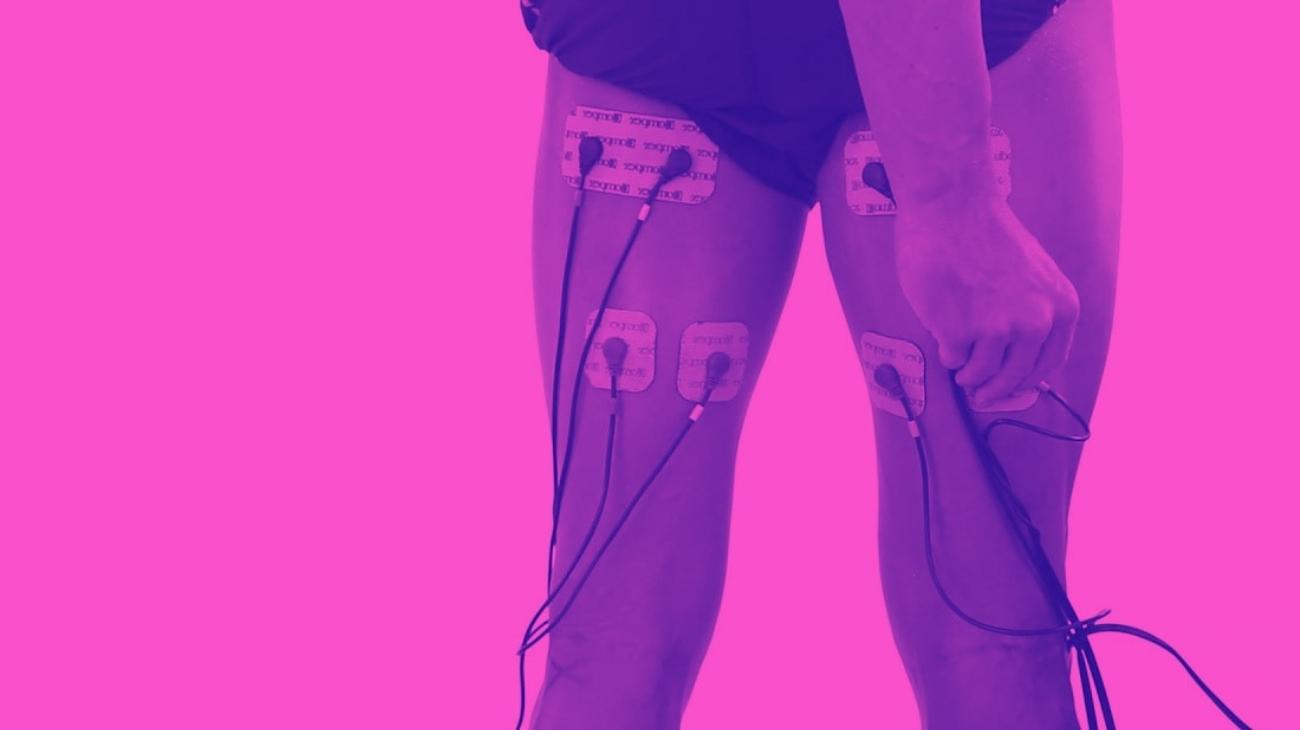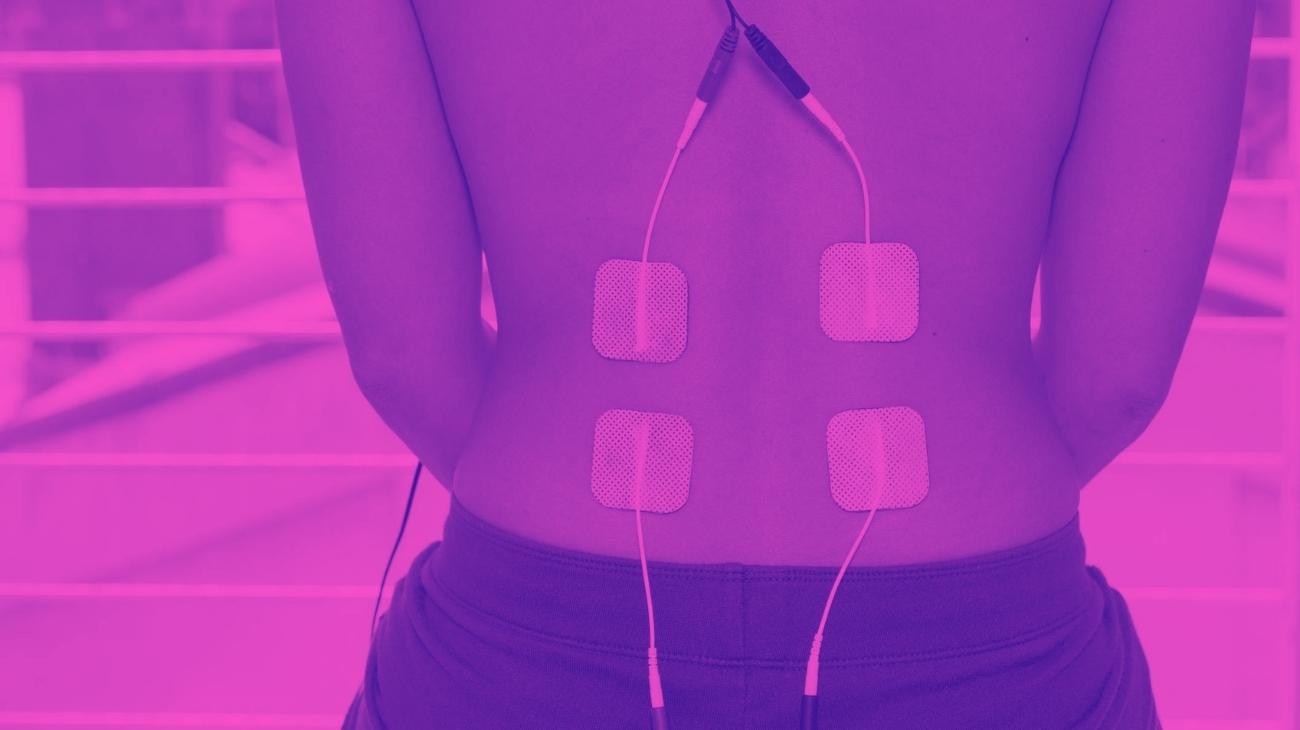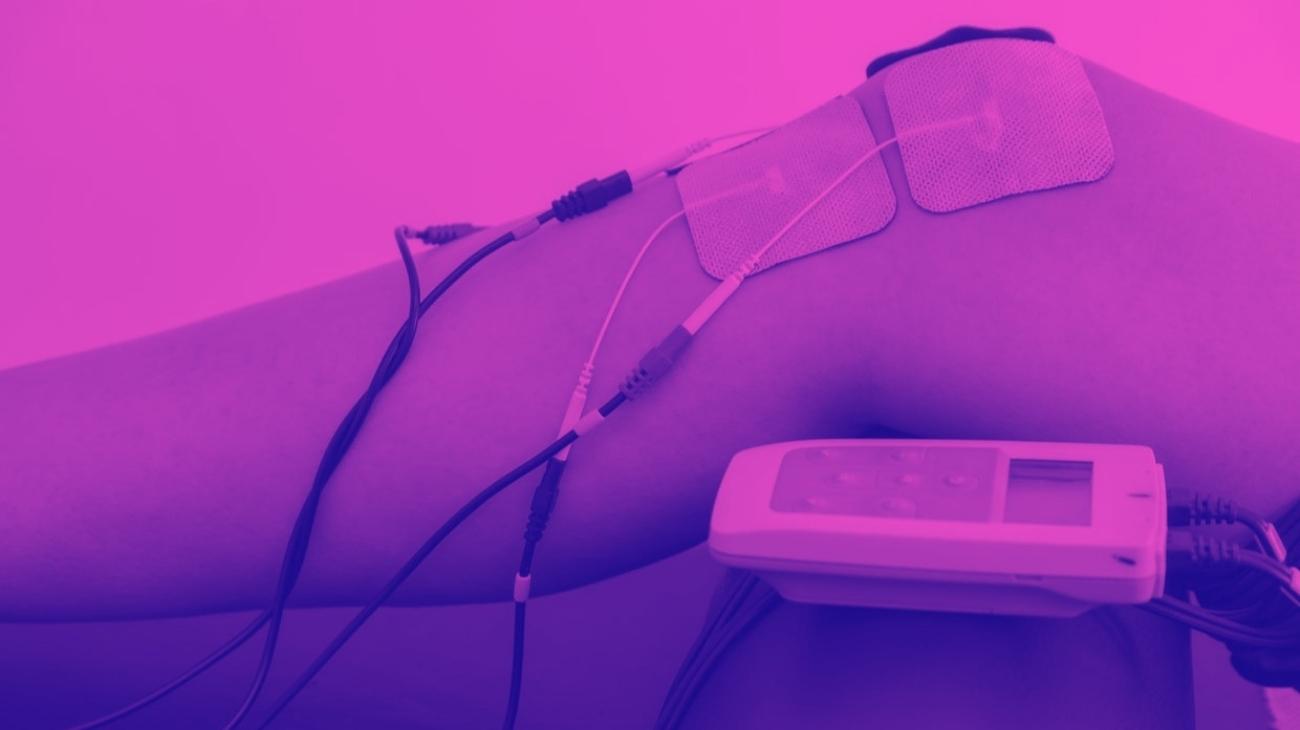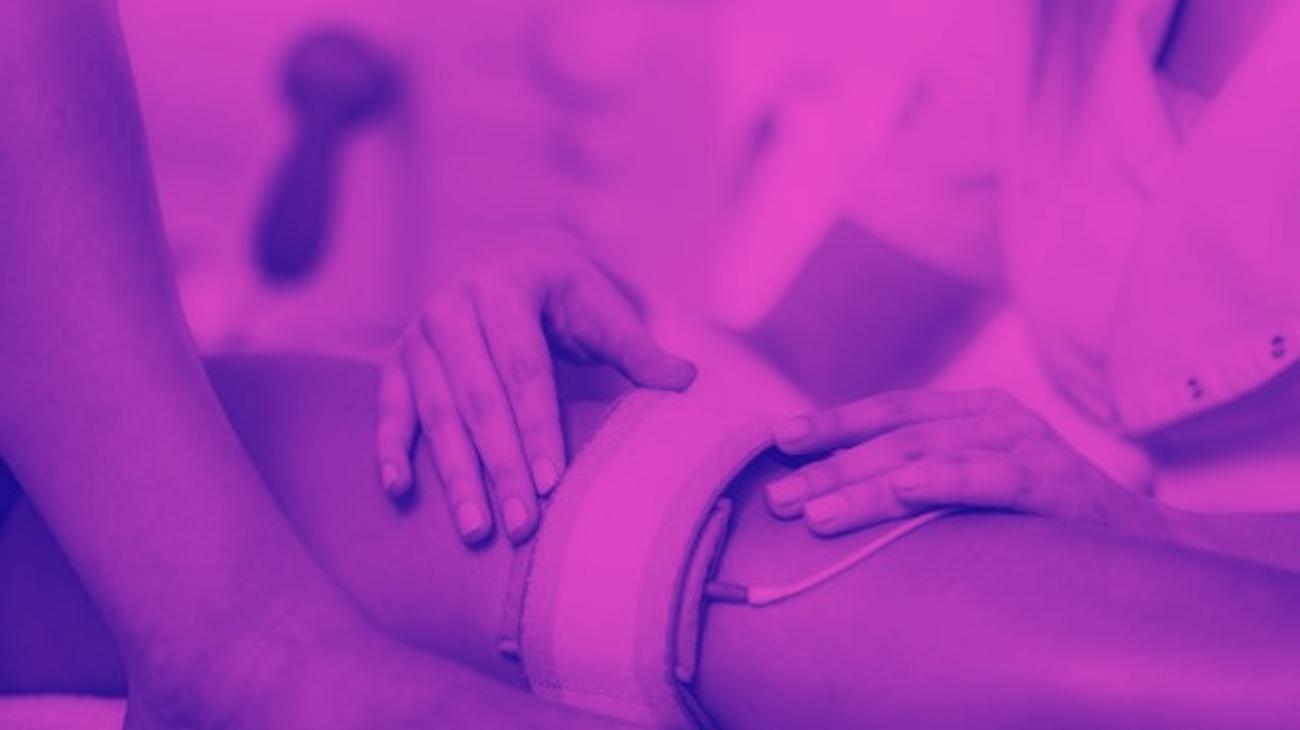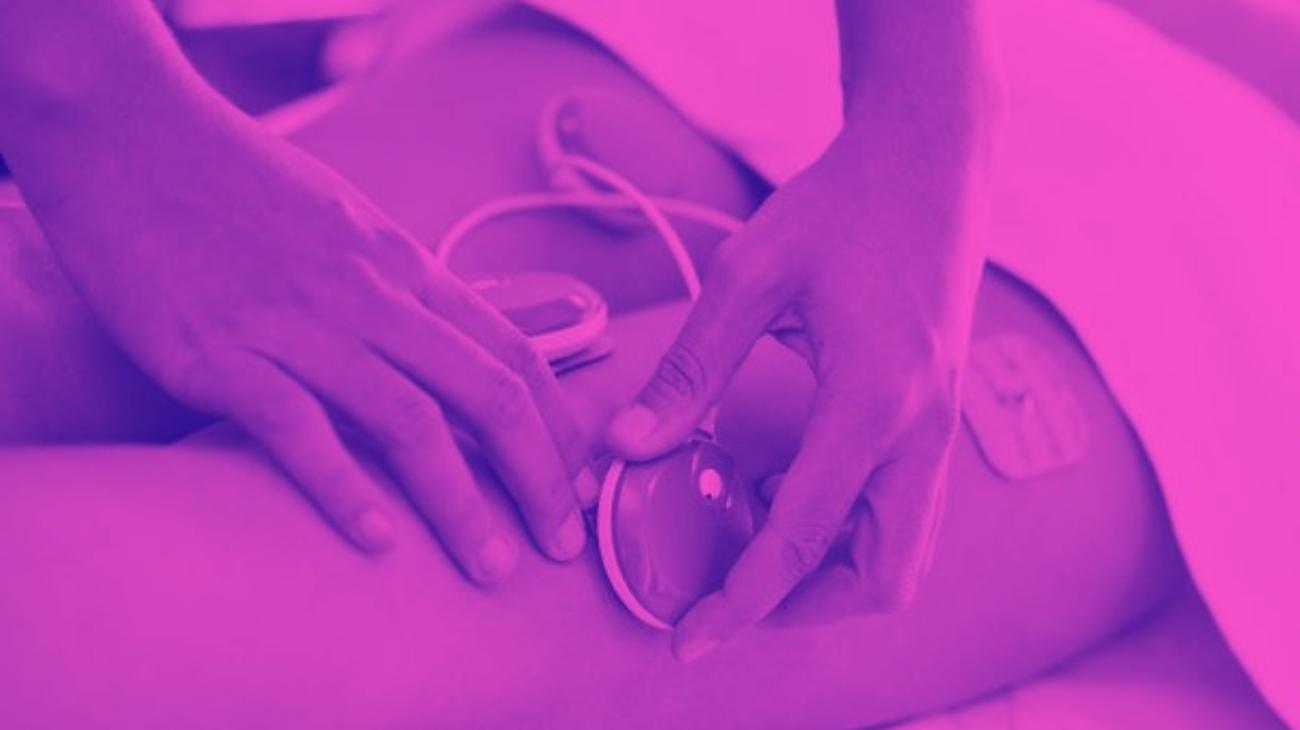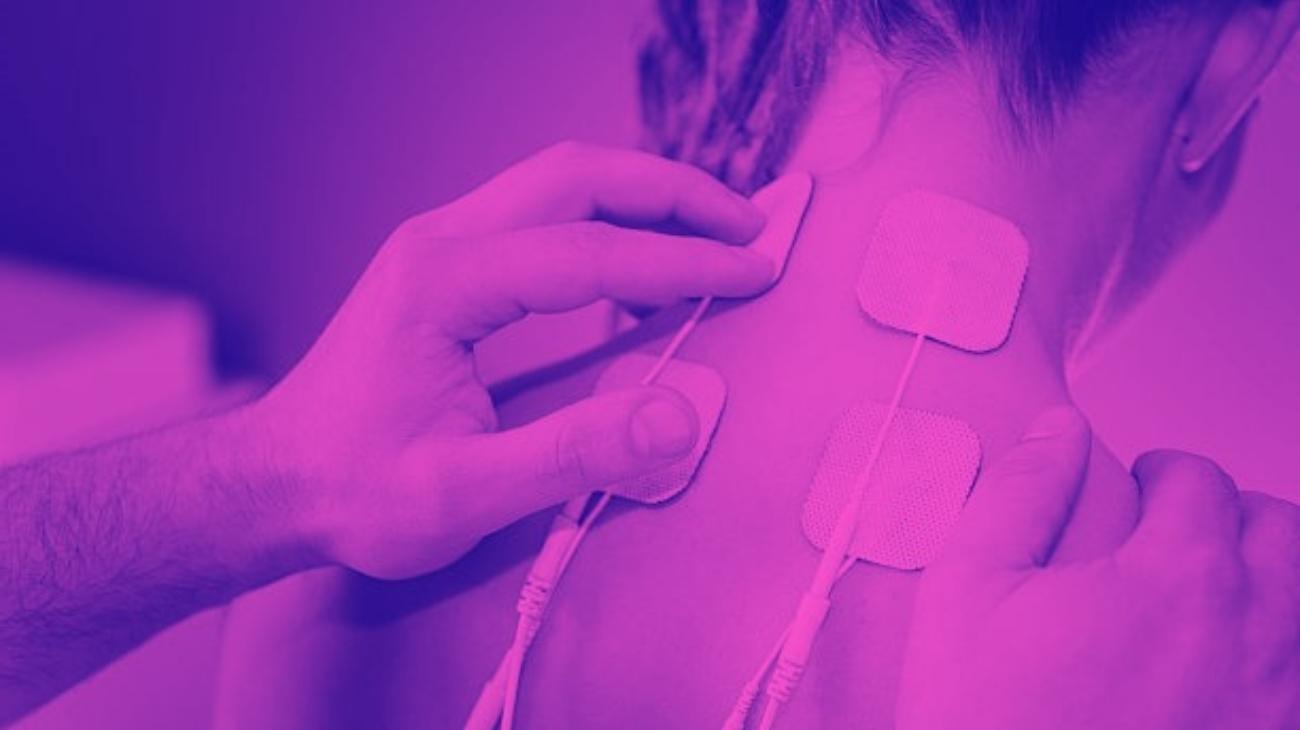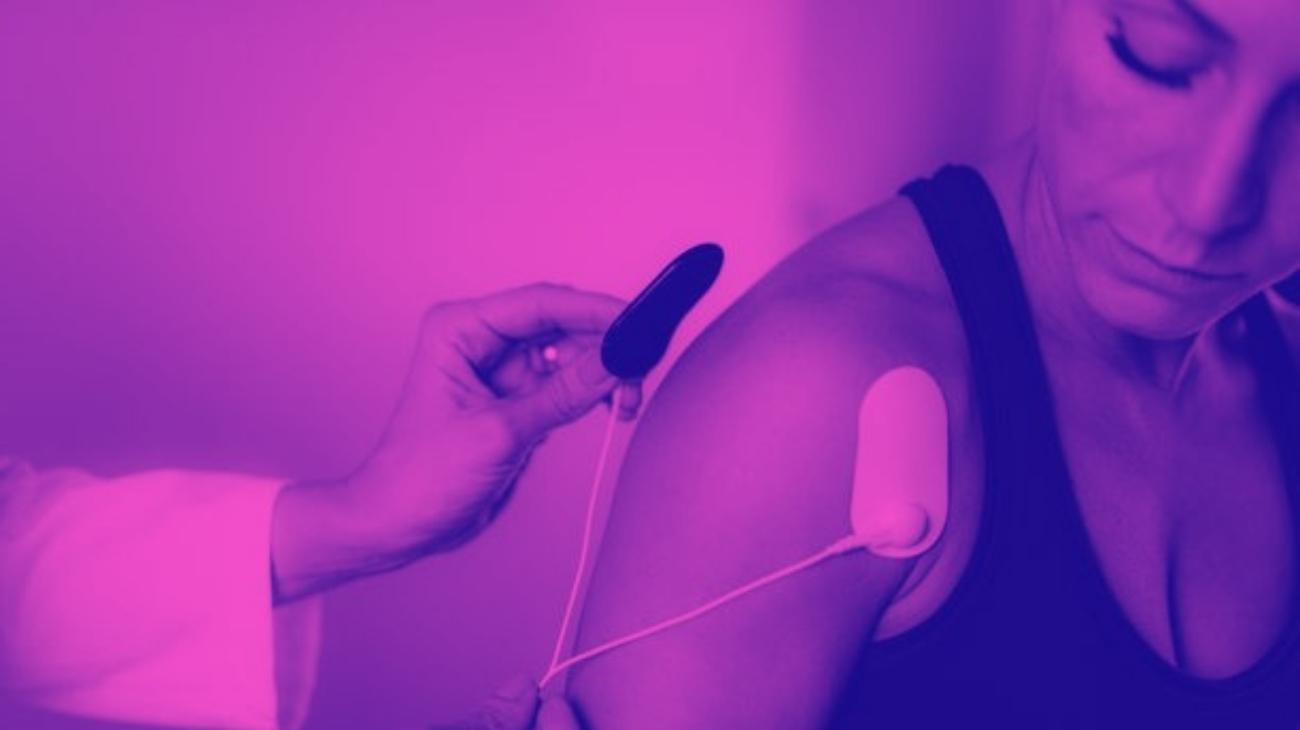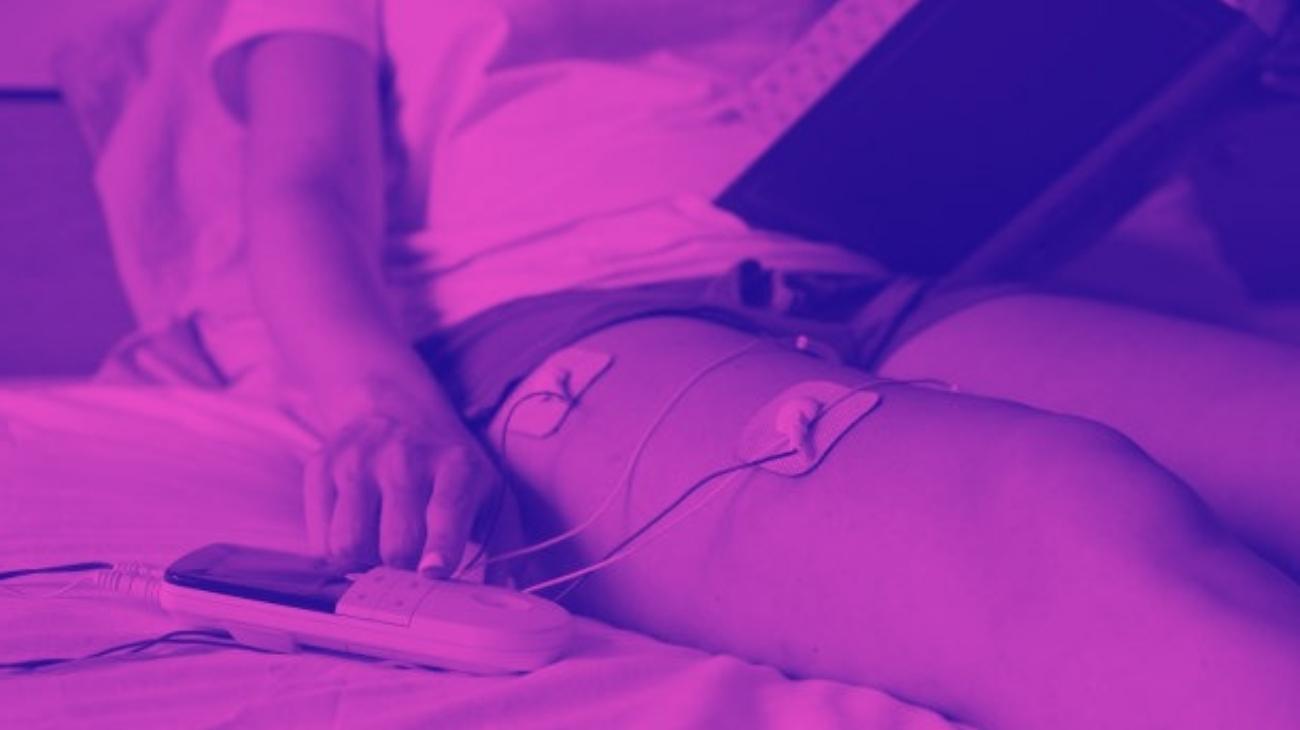- How to use a TENS machine to relieve plantar pain?
- Best TENS machines for foot injury recovery
- How to use an EMS muscle stimulator for the feet?
- Best EMS electrostimulators to strengthen plantar muscles
- Video: How to place the electrodes pads on the foot?
- More types of EMS electrostimulators and TENS machines you should know
- Most common types of foot injuries
- Differences between TENS and EMS: Which one to use for foot pain?
- Contraindications in the use of electrodes and electrotherapy
The foot is possibly the most important part of the lower extremities, and although its size might lead one to think otherwise, it is essential in the power and acceleration of the running start, being necessary in absolutely all sports and daily disciplines.
This means that they are constantly subjected to wear and tear, which makes them a common target for tendon, bone and muscle injuries of all kinds. Fortunately, electrotherapy allows the use of TENS and EMS, two forms of electrotherapy that will help both to relieve pain of all kinds and to strengthen muscles to avoid future injuries.
How to use a TENS machine to relieve plantar pain?
TENS unit therapy has been extensively studied over the last decade, reaching very favorable results for the treatment of pain that confirm its effectiveness. This is especially beneficial for the treatment of pain in the feet and ankles that often affect the quality of life of many people, but especially those with advanced age.
Among the most important benefits of transcutaneous nerve electrostimulation we can highlight:
- Release of endorphins: it has been proven that using TENS stimulates the production of endorphins, also known as the hormone of happiness as it has several effects on people's mood, which also works as a natural painkiller. This allows the feeling of relief in the foot to be maintained even after the end of the session.
- It influences the production of pain neurotransmitters: these are medullary cells that are automatically generated unconsciously when feeling an injury to the foot or ankle, and activate nociceptors to report the sensation of pain that will be transmitted by the tibial and peroneal nerves. TENS currents will limit and slow down their production to reduce the acute sensation of pain.
- Increases the pain threshold: the pain receptors of the tibial and peroneal nerves will be affected by the TENS currents, causing a higher neurotransmitter load to be needed to activate them, which will automatically raise the patient's pain threshold considerably.
- Prevents reciprocal innervation: which is an involuntary muscle contraction of the extensors and abductors of the toes close to the point of pain, which in turn is counterproductive and can increase the severity of the pain.
- Stimulates vasodilation: since TENS currents generate heat in the area of the foot where they are applied, dilating the blood vessels, which will help to relieve the pain, since both the heat and the oxygenation derived from the blood that will arrive have an analgesic effect.
These benefits make TENS therapy tremendously effective in treating foot injuries such as:
- Achilles tendinitis
- Ankle sprains
- Arthrosis of the foot
- Morton's neuroma
- Tarsal tunnel syndrome
- Plantar fasciitis
Best TENS machines for foot injury recovery
To save you time we have prepared a list of the best transcutaneous nerve stimulation units you can use to relieve foot pain.
- Type: TENS
- Channels: 1
- Modes/Programs: Not specified
- Intensity: Not specified
- Wireless: Yes
- Heat Therapy: No
- Battery: Not specified
- Electrodes: 1 Pad
- Display: No display
- Size: 6.22" x 1.42" x 3.27"
- Improves joint mobility
- Improves blood circulation
- Accelerates recovery from sports injuries
- Reduces pain symptoms
- Wireless electrodes
- No intensity levels specified
- Does not specify weight
- Not for muscle hypertrophy
Its efficient use of TENS technology allows it to block pain signals before they reach the brain, making it a safe method of treating ailments. It also has a long-lasting lithium battery and an energy-efficient function, which turns the device off every 20 minutes. One of the best devices on the market in terms of portability, discretion and functionality.
- Type: Combo
- Channels: 2
- Modes/Programs: 10 Programs
- Intensity: 20 Levels
- Wireless: No
- Heat Therapy: No
- Battery: Rechargeable Lithium
- Electrodes: 8 Pads
- Display: LCD
- Size: 3.3 x 0.2 x 2.5 inches
- Reduces pain symptoms
- With adjustable timer
- Accelerates recovery from sports injuries
- Includes carrying bag
- Improves blood circulation
- No battery life specified
- No weight specified
- No heat therapy
It has 10 pre-programmed massage modes and 20 intensity levels that focus on treating various types of pain, and a session timer function that allows you to set the duration of these between 10 and 60 minutes. Additionally, it has a lithium battery that allows you to apply therapy for more than 20 hours at a time.
- Type: Combo
- Channels: 2
- Modes/Programs: 24 Modes
- Intensity: Not specified
- Wireless: No
- Heat Therapy: No
- Battery: Rechargeable Lithium (up to 20 hours)
- Electrodes: 6 electrodes
- Display: LCD
- Size: Not specified
- Includes user manual
- Reduces pain symptoms
- Long battery life (up to 20 hours)
- Portable and small size
- Good quality
- Few intensity levels
- Does not specify size and weight
- Not suitable for muscle hypertrophy
It has multiple modes of use and its A-B output channel allows you to apply two types of massage simultaneously, making it one of the most versatile devices available on the market. The package includes 1 control, 1 protective case for the TENS unit, 3 pairs of electrodes, 4 power output cables, 1 USB cable, 1 user manual, 1 plastic case and 1 belt clip.
- Type: Combo
- Channels: Dual
- Modes/Programs: 9 Programs
- Intensity: 20 Levels
- Wireless: Yes
- Heat Therapy: Yes
- Battery: Rechargeable Lithium
- Electrodes: 2 Pads
- Display: Digital
- Size: 4.05" x 1.14" x 4.05" - 0.42 lbs
- Improves joint mobility
- Improves blood circulation
- With heat therapy
- Portable and small size
- TENS+EMS Combo
- Battery life not specified
- Non-universal electrode replacements
- Few electrodes included
This versatile device can treat both chronic and acute pain in a safe and natural way, thanks to its ability to increase the production of endorphins in the human body. It has 20 intensity levels that can be adapted to your needs and its heat therapy function allows it to reach a temperature of 43 °C (109 °F). Its long-lasting pads have a fairly long lifespan, allowing up to 30 uses.
- Type: TENS
- Channels: Dual
- Modes/Programs: 8 Modes
- Intensity: 25 Levels
- Wireless: Yes
- Heat Therapy: No
- Battery: 3 AAA Batteries
- Electrodes: 4 Pads
- Display: Digital
- Size: 2.14" x 5.5" x 7.08" - 0.33 lbs
- Includes carrying bag
- Improves joint mobility
- Portable and small size
- Reduces pain symptoms
- Good quality
- Few types of programs
- Not suitable for muscle hypertrophy
- Battery operated
It has an interesting session timer function that allows you to adjust the duration of each therapy up to a maximum of 60 minutes. Its compact size allows it to be carried in your pocket, so you can take it with you from home to work, or on the road, and use it whenever you need it.
How to use an EMS muscle stimulator for the feet?
While EMS is usually used mainly to stimulate contractions that simulate those we get when training muscles in the gym, in the case of the feet we can give it a different function and use lower intensity currents to get a contraction that mainly simulates a massage.
In this way we can take advantage of benefits such as:
- Muscle relaxation: with less intense currents than usual, we can achieve a relaxation of the extensor and abductor muscles of the toes, as well as some ankle muscles such as the peroneus brevis or the lower part of the soleus, to eliminate accumulated tension and avoid tendon injuries or muscle overload.
- Muscle strengthening: by raising the intensity threshold of the current we can strengthen the muscles of the sole of the foot that make up the plantar fascia and other ankle muscles to provide greater stability such as the tibialis anterior, the peroneus brevis and peroneus longus, or the soleus.
- Injury prevention: the electrical currents used in EMS will strengthen muscles, increase their resistance to fatigue and improve their nutrient assimilation, creating healthier tissues and fibers that are less prone to injury.
- Improves fatigue resistance: using EMS has been proven to increase the fatigue resistance of the foot and calf muscles by significantly reducing their oxygen consumption. This will help if you spend a lot of time on your feet at work as it will reduce the wear and tear on the plantar fascia that can lead to plantar fasciitis or heel spurs.
Best EMS electrostimulators to strengthen plantar muscles
Below we share with you a list of the best EMS stimulators that you can buy in the market to strengthen the muscles of your feet and take advantage of all the benefits of this therapy.
- Type: Combo
- Channels: Normally 2 (Dual)
- Modes/Programs: 6 Programs
- Intensity: Not specified
- Wireless: Yes
- Heat Therapy: No
- Battery: Rechargeable (7 hours of use)
- Electrodes: 2 Pods and 6 electrodes
- Display: Smartphone
- Size: Not specified
- Reduces pain symptoms
- Portable and small size
- TENS+EMS Combo
- Wireless electrodes
- Rechargeable battery
- Size and weight not specified
- No intensity levels specified
- No heat therapy
It has a rechargeable battery that can provide an autonomy of up to 7 hours per charge, 6 unique training programs focused on different branches of fitness to help you achieve your goals, and compatibility with your mobile for easy use. It is recommended for those physically active people looking for a compact, portable and natural way to deal with workout-related ailments.
- Type: Combo
- Channels: Dual
- Modes/Programs: 24 Modes
- Intensity: 20 Levels
- Wireless: Yes
- Heat Therapy: No
- Battery: Rechargeable Lithium (up to 20 hours)
- Electrodes: 10 Pads
- Display: Digital
- Size: 3.7" x 1.9" x 1.9"
- Includes carrying bag
- Long battery life (up to 20 hours)
- Portable and small size
- TENS+EMS Combo
- Improves blood circulation
- No weight specification
- No heat therapy
- No touch screen included
The Belifu electrotherapy device includes 10 reusable self-adhesive conductive pads and 5 sets of guide wires. The electrodes are coated with an adhesive layer that gives them perfect adhesion to the skin, and with proper care, can withstand a large number of uses before they need to be replaced.
- Type: Combo
- Channels: Dual
- Modes/Programs: 14 Modes
- Intensity: 25 Levels
- Wireless: Yes
- Heat Therapy: No
- Battery: Rechargeable Lithium
- Electrodes: 6 Pads
- Display: Digital
- Size: Not specified
- Portable and small size
- Includes carrying bag
- Rechargeable battery
- Includes user manual
- Accelerates recovery from sports injuries
- Does not specify measurements and weight
- Battery life not specified
- Does not include touch screen
The compact size of the device makes it incredibly practical and easy to carry, so you can use it anywhere you like quickly and discreetly. It is FDA approved, so it is completely safe to use, and its LCD screen gives you a full display of all settings so you can easily adjust your requirements.
- Type: Combo
- Channels: Dual
- Modes/Programs: 24 Modes
- Intensity: 20 Levels
- Wireless: Yes
- Heat Therapy: No
- Battery: Lithium Rechargeable (up to 20 hours)
- Electrodes: 12 Pads
- Display: Digital
- Size: Not specified
- Prevents muscle atrophy
- Includes carrying bag
- Improves blood circulation
- Long battery life (up to 20 hours)
- User manual included
- Some electrodes dry quickly
- No heat therapy
- No touch screen included
This amazing electric massager includes 12 reusable self-adhesive conductive pads and 3 sets of guide wires. The electrodes are coated with a layer of adhesive that gives them perfect adhesion to the skin, and with proper care, can withstand a large number of uses before they need to be replaced.
- Type: Combo
- Channels: 2
- Modes/Programs: 24 Modes
- Intensity: 20 Levels
- Wireless: No
- Heat Therapy: No
- Battery: Rechargeable
- Electrodes: 24 electrodes
- Display: LCD
- Size: 1.2" x 4.8"
- Improves blood circulation
- Prevents muscle atrophy
- Number of electrodes
- Good quality
- Reduces pain symptoms
- Does not specify battery life
- No touch screen included
- No weight specified
It has 24 modes of use and 20 levels of intensity designed to provide different methods of relief for all types of ailments, by means of electrical impulses that stimulate the production of endorphins. Its lithium battery allows up to 30 hours of continuous use and its compact design, 1.2x4.8 inches, allows you to take it anywhere you want at any time.
Video: How to place the electrodes pads on the foot?
Electrodes for feet
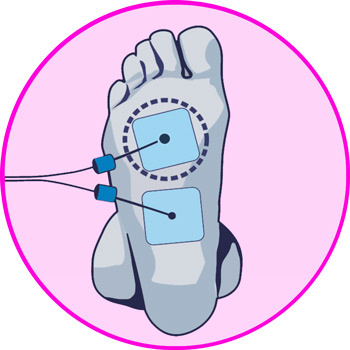
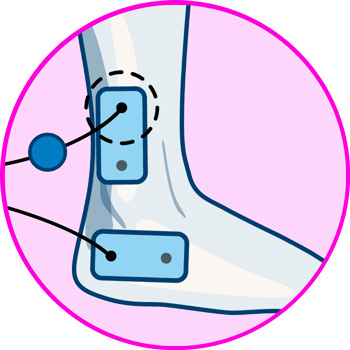
- For tarsal tunnel syndrome: To relieve pain such as tarsal tunnel syndrome, an electrode is placed on the outer side of the ankle, and another slightly lower on the inner side, so that the current flows directly through the nerve.
- For Morton's neuroma: In case of other neuropathies such as Morton's neuroma, a pad is placed just above the point of pain, and another on the sole of the foot just below that point, so that the affected nerve is in the middle of the current.
- For plantar fasciitis: For plantar fasciitis, we proceed to place one pole at the base of the toes slightly angled towards the halux and the second toe which is where the arch of the foot is pronounced, and another pole on the heel or calcaneus.
- For calcaneal spur: In case you want to treat a spur, one pad is placed right on the heel and the other on the belly of the plantar fascia to shorten the radius of action. Another option is to use a mat-shaped foot massager with TENS functions.
More types of EMS electrostimulators and TENS machines you should know
Most common types of foot injuries
The foot is full of ligaments, bones and small muscles that, not having too much tissue, make them unprotected against direct blows.
This makes it exposed to injuries such as those mentioned below:
- Tarsal tunnel syndrome: also known as tibial neuralgia, it consists of the pinching or compression of the section of the tibial nerve that passes through the inner side of the ankle, generating a sharp pain that manifests itself when standing for a long time or using the flexor muscles of the joint.
- Plantar fasciitis: this injury occurs due to the shortening of the fascial tissue of the sole of the foot, also known as plantar fascia. It usually manifests with a sharp pain when standing for a long time, but unlike tibial neuralgia, this is concentrated on the sole of the foot, from the heel to the base of the toes.
- Calcaneal spur: it is a calcification in the insertion of the plantar fascia with the calcaneal bone of the heel, generally caused by an excess of traction that causes irritation and wear in this union between tissue and bone. This spur is created in the form of a spear, which causes an uncomfortable pain to be felt when the heel is supported, which will eventually also generate damage to the fascia that will manifest itself as plantar fasciitis.
- Metatarsal fracture: the metatarsals are those bones that go from the ankle to the base of the toes that provide stability when walking. Unfortunately they are too exposed and with little muscle, which makes that any direct blow on them generates a fissure that can even be so pronounced that it generates a total separation of the bone in two or more parts. The most common metatarsal to fracture is the 5th metatarsal, which is located on the external side of the foot.
- Achilles tendonitis: consists of inflammation and irritation of the posterior tendon that joins the calf to the heel, the same one that allows you to stand on your toes. This manifests itself with instability when walking, sharp pain in the back of the foot and inability to separate the heel from the ground.
Differences between TENS and EMS: Which one to use for foot pain?
Electrotherapy has two methodologies. The first is transcutaneous electrical nerve stimulation or TENS, which uses electrical currents to act on the pain receptors of the tibial nerve, which when it reaches the heel branches into calcaneal branch, plantar branches and the baxter nerve, and the peroneal nerve, which when it reaches the ankle divides into several branches that pass through the metatarsals and reach the toes. The aim is to increase the patient's pain threshold by intervening in the neurotransmitter signals of an ailment.
The second is muscular electrostimulation or EMS. This uses currents that reach the flexor and extensor muscles of the fingers, and also on the calves and soleus to achieve a contraction of the same. In this way a strengthening of the muscle fibers is achieved that will reduce the likelihood of injury.
The differences between the two are evident; while EMS acts at a muscular level, TENS acts at a neurological level, which makes the latter the ideal therapy for pain relief in the case of tendon injuries or neuropathies such as tarsal tunnel syndrome or Morton's neuropathy. However, EMS is also useful to prevent future injuries, as well as to achieve a post-healing rehabilitation of any foot or ankle injury.











